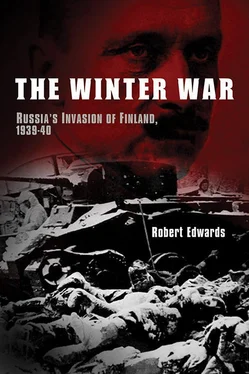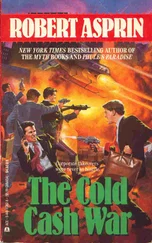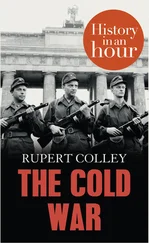In step with this progress, the State infrastructure had blossomed in terms of post, telephone services and the rail net. Finland’s economic progress since independence reflects an extraordinarily well-kept secret of history, and business with Britain accounted for 60 per cent of the credit side of the balance of trade. Trade with the USSR, by contrast, amounted to less than 1 per cent on the same basis of calculation. Indeed, trade with Greece was more robust. There was little the Finns wished to buy from Russia, and the reverse proposition reflected the simple truth that the Finnish markka was strong, at nearly 200 to the pound sterling and firming, whereas the Russian rouble was effectively wampum, and had been since the breathtaking incompetence of the Bolshevik regime had been unleashed upon a reasonably effective, if agrarian economy. [4] Exact historical exchange rates are hard to find; the markka had plunged during the depression from c. 100 to the pound to c. 300, but was in strong recovery by 1939.
Population growth in the Soviet Union was on the verge of collapse; in the countryside as a result of famine, in the towns as a result of the institution of marriage wilting visibly under the vast and insistent social pressure of the Stalinist state. Professor Geoffrey Hosking reports that abortions had outstripped live births by nearly 200 per cent in Moscow in 1934. [5] Geoffrey Hosking, A History of the Soviet Union, p. 213.
Whatever interpretation one may put upon the sociological implications of such a statistic, economically, it was not an encouraging ratio.
So, on the eastern side of this vast 800-mile border, things were rather different, for the Soviet economy was managed by the knout. A burgeoning network of inefficient satrapies characterized by the slave camp, the firing squad and, dominating all else, the Great Purge, rather typified it. It has been estimated that by 1938, the population of the Gulag system was between 8 and 12 million, or at the very least, more than twice the population of the whole of Finland. [6] Robert Conquest, The Great Terror, p. 532.
This unpromising foundation was further hamstrung by the destructive policy of setting quite ridiculous output targets— Normy— which, if met or exceeded (always hard to prove within the chaotic reporting system) would propel the manager responsible quickly up the party hierarchy and therefore away from trouble. In truth, Soviet industrial production was, save ‘hero projects’ and defence material, almost stagnant, and agricultural output (as a natural result of forced collectivization and tactically imposed terror-famine) languished below First World War levels. Output numbers, like so many official Soviet-issued statistics to be found elsewhere in this book, are highly suspect, but gained credence in the West as a result of the remorseless propaganda which attempted to characterize the USSR as an economic miracle; but the Soviet Union represented central planning at its worst. Never has a political-economic structure been hijacked and wrecked in such a comprehensive manner—until Robert Mugabe’s Zimbabwe. As the Revolution devoured its children, so the hapless peasantry was sometimes forced to take the route of desperation and devour its own.
Naturally, the Soviet party apparat had a way of dealing with this unhelpful cross-border comparison with Finland—the prolonged, extravagant and repetitive sledging of successive Helsinki regimes. To the average Russian (particularly a Leningrader), Finland, according to the Party orthodoxy, represented nothing more or less than a ‘vicious and reactionary Fascist clique’. Marshal Mannerheim was a particular hate figure, but he was not the only one: Väinö Tanner, leader of the Finnish Social Democrat Party, was the recipient of a volume of Soviet contumely in exact proportion to the success of his various enterprises, only one of which was politics. For Tanner, things would get much worse.
Väinö Tanner ruled the Social Democrats with the proverbial iron hand in a velvet glove. As the chairman of the ELANTO consumers’ co-operative concern, as well as being the architect of the wider co-operative movement, [7] The Scandinavian model of co-operative commerce had been the brainchild of the Swede, Martin Sundell and the Finn, Hannes Gebhardt, and was based upon their observations of the buying power of the mill workers of Rochdale, England in the mid nineteenth century.
which was as close to all-powerful as any institution in Finland could be, Tanner could easily have forged a career in capitalistic business, but politics, particularly Social Democrat politics, fitted in rather neatly with his activities. In the West he was respected, particularly by the labour movement in Britain, where the great and the good of the British left (or at least a large part of the right wing of it) thought very well of him. Others, more in thrall to Moscow, would obediently follow Pravda’s line, and refer to him routinely as ‘Ramsay MacTanner’. There is no evidence that he cared remotely, one way or another. Tough, tactless, stubborn and frequently bloody-minded, there is something of the Boer farmer about him. At this stage, Tanner himself regarded Mannerheim as perhaps a dangerous schemer and the Marshal was distrustful in return, blaming Social Democratic tight-fistedness for the parlous state of his beloved army. The two men would soon revise these mutual opinions, but not before some friction.
The real architect of the rigorously executed economic policy that had delivered true miracles, but which had left little room for the expensive matter of defence, was not Tanner, but one of Europe’s most sophisticated and imaginative central bankers, Risto Ryti, who exercised the same rigid control over the Bank of Finland as Tanner did over the Social Democrats. The result had been a startling increase in personal credit and consumption, and even when the global economy had shuddered to a halt and slipped into reverse, Ryti had taken precautions, urging that the violent deflation (which since 1928 he—virtually alone—had been convinced would happen) warranted extreme care. Finland had listened and as a result, what might have been a disaster turned into a mere inconvenience; at the darkest point of the global depression (with the Dow Jones industrial average at 44) in the spring of 1932, Finland’s unemployment was a mere 2.4 per cent.
Ryti’s policies had been selectively Keynesian; by effective management of public debt, Finland had been able to provide the essential shock absorber for its economically harassed population and was able to act contra-cyclically, drafting otherwise unemployed workers into government-sponsored civic programmes which served well both to develop State infrastructure and maintain social conditions, so that the massive land distribution which had taken place, fuelled by levels of credit (nothing was for nothing) which appeared eye-poppingly unwise, allowed the State to be the employer of last resort, hand in hand with the Bank of Finland being the lender of last resort. One hand thus washed the other and once raw material prices started to rise, a vast potential problem, which elsewhere had given rise to unhappy political solutions, had been more or less avoided. Ryti’s well-deserved reputation (perhaps, even, as one of the world’s first modem central bankers [8] Ryti’s role in the economic evolution of Finland has been compared to that of Alexander Hamilton, with some justification.
) had established him as a clever man who was prepared to take risks. Quite properly he regarded Treasury matters to be essentially disciplined but creative ones, and in this particular he had earned the unlimited respect of Mannerheim, whose own tenure as a bank chairman (a purely letterhead appointment—Mannerheim was certainly no financier) had not marked out for him a period of unalloyed pleasure.
Читать дальше











